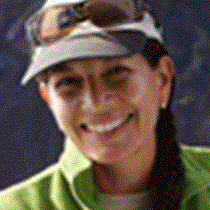Santiago Island
Following in the steps of Charles Darwin, who visited the islands in 1835, we landed early at Espumilla Beach, made out of soft reddish sand, a favorite nesting site for marine turtles and a good spot for the Galápagos hawk on their search for prey.
Following a trail through the button mangrove forest, we reached another forest but this time of huge incense trees (palo santo). Here we encountered Galápagos flycatchers, Galápagos doves, many Darwin finches and lava lizards, as well as endemic and native plants.
Back on time for breakfast, the National Geographic Islander, repositioned at Buccaneer Cove, a famous site for pirates, buccaneers, and whalers, who used the cove to go inland in search of food, water, and tortoises.
We cruised the coastline in our Zodiacs, looking at the impressive lava cliffs and formations known as the monk and the elephant, where brown noddy terns, blue-footed boobies, swallowed tailed gulls, and fur seals were resting. Others among us preferred to explore the underwater world by snorkeling.
Once on board we had lunch and immediately afterward our young explorers had the opportunity to learn how to drive a Zodiac. Meanwhile the adults had a photo hands-on session as well as a talk about Darwin.
At 3:15 we were ready to land at Puerto Egas, where two options were offered, either a nature walk along the coastline or swimming and snorkeling at the beach.
The nature walk was amazing, the perfect light and low tide conditions to see furs seals at the lava grottos, where we counted more than 16 fur seals on the lava rocks.
On the way back to the landing beach we were surprised by lava herons eating lizards, dragon flies, crabs, and even yellow warblers. What a day!




